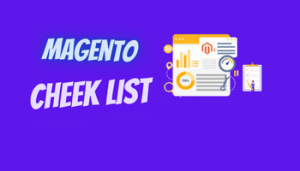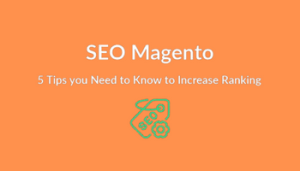Best strategy in magento seo in 2022

What is Magento SEO, and how does it work?
Magento SEO refers to a collection of SEO tweaks specific to the Magento platform. Magento includes SEO-friendly features
such as a robots.txt file, sitemap.xml, and several page redirection options.
Duplicate material from the faceted navigation, incorrect canonical tags, and a lack of blogging functionality are all Magento SEO concerns.
SEO on the Magento platform can be improved in the following ways:
Crawling and indexing are the first steps.
Content duplication and faceted navigation
Faceted navigation is likely to be one of the most significant SEO difficulties with any Magento site.
Because faceted navigations dramatically increase the number of sites that may be crawled, they cause major crawling and indexing challenges.
Because faceted navigation sites may only filter or narrow existing products, they create redundant and related material.
Furthermore, when you consider that each combination of parameters might be considered a separate page, the number of pages created via faceted navigation can be huge.
In this example, Google provides a video that demonstrates how a store with 158 SKUs was able to build 380,000 unique URLs for Googlebot to crawl. That’s not ideal!
You’ll probably need to take efforts to control the crawl if your Magento store uses faceted navigation.
While a how-to on regulating the crawl of faceted navigation may fill several blog entries, I’ll try to condense the processes that need to be followed.
Examine the faceted navigation for low-quality, indexed pages. Determine what steps should be taken to remove them from the index (no-index, canonical tag)
Examine the log files to see whether any low-quality pages are being crawled.
Best Local SEO services guideline in 2022
Through the robots.txt file, you may prevent any low-value parameters from crawling.

Consider indexing only pages that have a high search potential.
Of course, depending on the site, the stages will differ significantly. Overall, if you use faceted navigation on your Magento site,
one of the most essential things you’ll need to do is analyze how Google is crawling and indexing the pages that are being generated,
and then take steps to remove the indexation and then prevent the crawl of low-quality or duplicate sites.
Page with products and categories tags that are canonical
Canonical tags for both product and category pages are not set by default on Magento sites.
This isn’t ideal, because it’s recommended practice to have self-referential canonical tags on product and category pages.
This tells search engines that these are the pages that should be high in the rankings.
Fortunately, in vanilla Magento, you can change this:
- Select Stores > Configuration from the drop-down menu.
- Select “Catalog” from the “Catalog” dropdown menu.
- Select “Search Engine Optimization” from the dropdown menu.
- Choose “Save Configuration” from the drop-down menu.
In pagination, canonical tags are used.
When looking at paginated URLs on Magento sites, we can notice that canonical tags aren’t set by default.
All paginated URLs in a series in Magento have a canonical tag that refers back to the parent category page. For example, consider how the canonical tag for a category’s “Page 2” would look
From an SEO sense, this isn’t the ideal approach. Canonical tags should only be used to combine text that is duplicated.
Paginated content should not include canonical tags that lead to this version because they are not duplicates of the root versions (as they contain separate products).
Each page in the pagination series should instead have its own self-referential canonical tag. This tells Google that the paginated URL has unique content and should be indexed as such.
It’s possible that a developer will need to construct a special solution that allows the site’s pagination to use self-referential canonical tags instead of pointing to the root category page.
Internal search pages that can be indexed

Internal search pages are indexable out of the box, which is another Magento SEO concern.
This means Google will be able to crawl and index these low-quality pages. In most cases, these pages will be found in the /catalog search/ URL path.
Here’s an example of a Magento site that has over 4,000 internal search pages in Google’s index:
You’ll want to make sure the “no-index” tag is added to these pages to prevent them from being indexed by Google. We propose hiring a developer to do the work for you and giving them this post as a reference.
You’ll want to double-check that none of your internal search URLs are being indexed once you’ve added the “no-index” tag.
Robots.txt
The robots.txt file can also be configured within Magento. You’ll want to use the robots.txt file to limit the number of pages Google is allowed to crawl on your Magento site.
If your site uses faceted navigation, which allows users to choose from a range of properties, this is extremely critical to set up.
Fortunately, Magento lets you manage your site’s robots.txt file.
You can do so by following the instructions below:
- Navigate to Content > Design > Configuration in the Admin sidebar.
- Select “Edit” next to the “Store View” you want to change.
- Expand the dropdown menu for “Search Engine Robots.”
- Fill up the “Edit custom instruction of robots.txt File” field with your robots.txt commands.
The way you modify the robots.txt file will be specific to your store. Unfortunately, there is no such thing as a one-size-fits-all solution.
The major goal will be to prevent low-value pages (those that aren’t indexed) from being crawled while enabling high-value pages to be crawled.
The following are some general things you might want to block in your robots.txt file:
- The faceted navigation and sorting choices result in low-value pages.
- Internal search pages on the website
- Pages for logging in
- The shopping cart of the user
Sitemap.xml
Sitemap.xml files provide Google with a way to find all of your site’s important URLs. This means that, regardless of the site’s architecture, Google can use sitemap.xml to discover key URLs.
Fortunately, Magento can generate a sitemap.xml file and does so well in its default configuration.
The XML sitemap parameters are technically configurable under Magento’s “Catalog” menu. The majority of these, though, should be fine.
You may need to build your sitemap.xml file while these settings are being configured so that it can be published on the site. Fortunately, that procedure is quite simple. Best Local SEO services guideline in 2022
This can be accomplished by:
- To get to Marketing > SEO & Search > Site Map, go to Marketing > SEO & Search > Site Map.
- Select “Add Sitemap” from the drop-down menu.
- Add the text “sitemap.xml” to the “Filename” field.
- Choose the URL path you want to associate with your sitemap.xml file for “Path.” This is usually found in the “/pub/” URL path.
- Select “Save & Generate” from the drop-down menu.
Rendering in JavaScript

On Magento sites, you’ll also want to be aware of any material loaded via JavaScript. JavaScript is commonly used by Magento to load important store content.
While this isn’t necessarily a bad thing for SEO, it’s something you’ll want to keep an eye on.
If JavaScript is necessary to load crucial content on a page, Google will have to undertake a two-step indexing procedure,
first processing the HTML and then returning to the site to render any JavaScript-loaded content.
The second stage of the indexing process is where SEOs must check to confirm that Google was able to “see” all of the material on the page.
It’s worth examining whether any elements loaded via JavaScript are indexed.
We’ll want to make sure that JavaScript is correctly indexed because it’s used to load a lot of the content on the website.
Fortunately, tools like The Mobile-Friendly Testing Tool and The Rich Results Test can help us figure out what Googlebot can render on the page.
We also prefer to manually inspect the index by looking for material loaded via JavaScript and then using the “site:” search operator to see if Google can read the text on the page.
JavaScript SEO is a broad topic, so I recommend reading Pierce Brelinsky’s tutorial for additional details. Just keep in mind that if you’re using Magento, some of your content will almost certainly be loaded via JavaScript.
Paths to URLs
Magento adds the “.html” URL extension at the end of the product and category URLs by default.
While this isn’t technically “bad” for SEO, it can result in longer URLs that are more difficult to read for users. The format of URLs without the “.html” extension will be clearer for users.
You can remove the.html extension from URLs by doing the following steps:
- Select Stores > Configuration from the drop-down menu.
- Select “Catalog” from the “Catalog” dropdown menu.
- Select “Search Engine Optimization” from the dropdown menu.
- “Product URL Suffix” and “Category URL Suffix” should be found.
- Replace “.html” with “/” in the “.html” field.
- Choose “Save Configuration” from the drop-down menu.
As a result, your store’s URLs will be cleaner and easier to understand.
Please keep in mind that this is best done on a completely new Magento site. All URLs on your Magento store will be automatically updated as a result of this modification.
If your store has been around for a while, updating this field without sufficient migration planning could result in a reduction in rankings.
As a result, stores that have been around for a while may choose to preserve the “.html” extension.
Furthermore, without the “.html” extension, the old URL routes will not immediately redirect to the new URLs.
This may necessitate the implementation of global redirect rules to ensure that both visitors and search engines are directed to the new pages. more read
Redirections on a global scale
On your website, Magento uses global redirects. This implies that whether your store uses a “www” subdomain or “HTTPS,”
Magento will still redirect users to the right destination URL if they don’t enter those parameters.
This is fantastic for the site’s user experience because users should still end up on the right page even if they don’t key in the exact destination URL.
Wayfair published a well-known study in 2016 that found that 302 redirects can degrade link equity considerably.
While Google claims that 302 redirects convey link equity, this is still a point of contention in the SEO world. While we believe that 302 redirects now transfer far more link equity than they ever did,
we believe that you should only use them when absolutely necessary.
As a result, we advise modifying this in the Magento platform.
Fortunately, this is a simple change to make:
- Select Stores > Configuration from the drop-down menu.
- Select “Web” from the “General” menu.
- Select “Url Options” from the dropdown menu.
- “Auto-redirect to base URL” should be set to “Yes (301 Moved Permanently).”
Redirects that are unique to you
You’ll also want to install 1:1 redirects for particular pages, in addition to the site’s global redirects. This ensures that you can establish redirects for old pages if the need arises. Magento, thankfully, includes this feature out of the box.
You can perform the following steps to implement redirects for individual pages:
- Go to Marketing > SEO & Search > URL Rewrites in the Admin sidebar.
- Select “Add URL Rewrite” from the drop-down menu.
- In the “Request Path” field, type the URL you want to redirect. This must be a URL that is relative to the current location.
- In the “Target Path,” type the URL of the desired page. This must be a URL that is relative to the current location.
- Select “Redirect Type” from the drop-down menu. In most cases, “Permanent (301)” is the best option.
- “Save” is the option to choose.
Please note that in order to set up redirects, the page must be fully removed from Magento, as live pages cannot be redirected.
As a result, redirects are “all or nothing,” as they must be totally deleted from the platform before they may be used.
One thing to keep in mind about redirects in the Magento platform is that when you modify the URLs, it will automatically create redirects. Best uses SEO keywords tools in 2022
5. Content on the page
Do you want to customize the title tags, meta descriptions, and URLs for each of your products? No worries, Magento comes with this SEO tool pre-installed.
Simply scroll down to the “Search Engine Optimization” dropdown on any individual product or category page. In the “Meta Title” field, type your title tag, and in the “Meta Description” field, type your meta description.
Products that are similar
“Related Products” is another fantastic Magento feature that you can use. This is something you can control on individual product pages.
Adding “Related Products” to all of your product pages is a great method to improve your site’s SEO in multiple ways:
Offering users additional items that are comparable to the one they’re on, can assist improve the overall UX and engagement.
You can manually set “Related Products” for a specific product on Magento product pages. To do so, go to the product’s page and search for “Related Products,
Up-Sells, and Cross-Sells.” After that, go to “Add Related Products” and add any other SKUs that users might be interested in. These internal links should now appear at the bottom of your product page!
The ability to blog
One of Magento’s biggest SEO flaws is that it doesn’t come with blogging functionality out of the box.
While the category and product pages of an e-commerce site are the most essential in terms of revenue, blogs can still be highly important for e-commerce businesses.
In recent years, there has been a clear movement toward more informational content ranking for keywords where a category or product page would normally rank.
We can observe that Google is increasingly prioritizing material like guides, affiliate sites, and “how-to” articles over product and category pages.
This means that Magento stores’ SEO success may be limited if they don’t have a location for informational material to live.
Let’s imagine we open a business that sells cameras that are ideal for taking selfies. Naturally, we’d want to construct a page for the phrase “selfie cameras” to rank for. When we look at the SERPs, however, we see that some of the top-ranking results are informational articles. what is Keyword research why it is important?
Data that is organized
Structured data is a type of code that you may put on your website to help Google understand what each page is about.
Because Magento sites can be rather large, structured data can be a wonderful approach to help Google comprehend the site at scale.
- Here is our ideal mapping of which structured data types should go on various page designs for e-commerce sites:
- Organization’s Home Page
- BreadcrumbList, CollectionPage, category page
BreadcrumbList, Product, Product, Product, Product, Product, Product, Product, Product, Product, Product, Product
Article on a blog
This mapping can assist Google in better comprehending the content of your store. Because these will be included on your site’s most significant pages, here’s a little extra information about CollectionPage and Product structured data.
Best free keyword research tool in 2022
What is SEO service? 7 best strategies in SEO service
